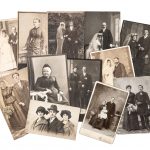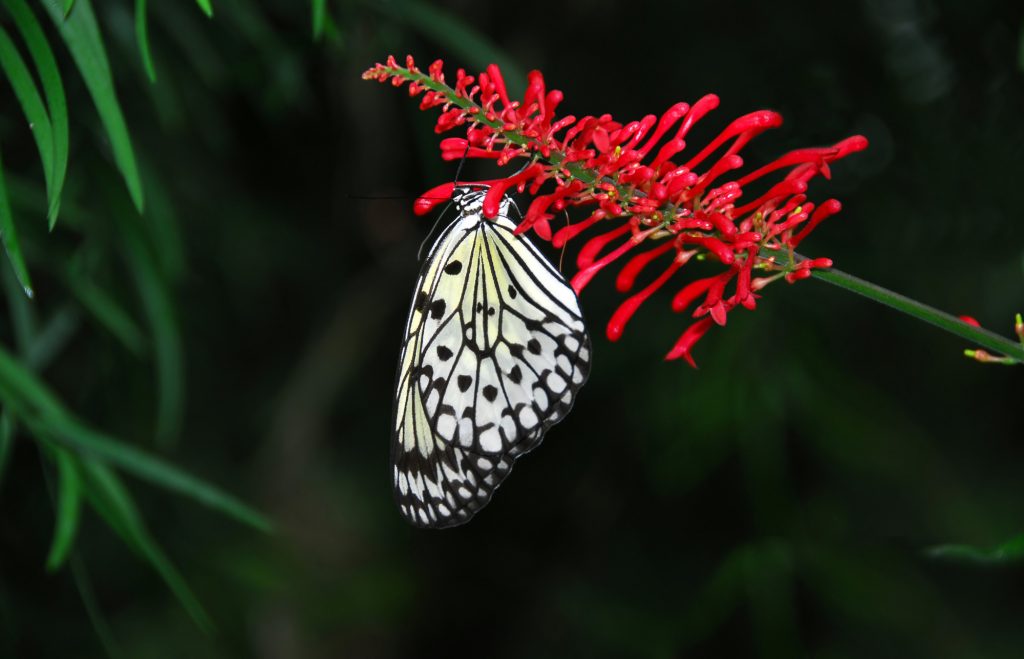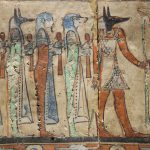
On the wind, you dreamed
On the water, you traveled
On the land, you settled
On my family tree, you grew
Famines, fires and floods, volcanoes, earthquakes, hurricanes, tornadoes, tsunamis, wars, genocide, persecutions and plagues and more.
Centuries of these catastrophes have left their marks all over the world. “Death counts” are estimated, declared, and recorded for posterity
What about the “life counts”? That’s how I describe those who avoided, escaped, endured, somehow survived the catastrophes of their lifetime. These are the healthy, the strong, the resourceful, the resilient, the skilled, and of course, the lucky. Somewhere among them are your ancestors. Whether or not you know who sits on the branches of your family tree, they existed. You are the living proof.
Cultures the world over believe in the power of the ancestors to influence the lives of the living. So, in times of trouble — like now — it’s good to call on your ancestors for help. How? Through ritual.
SEEING THE ANCESTORS
It helps to know how some cultures “see” their ancestors. In many of the seasonal rituals I lead, I invite the spirits of the ancestors. Cultures all over the world recognize their ancestors. Some see them in:
- Butterflies, especially the ghostly white ones
- Massive old trees
- Sacred mountains
- Stones
- Stars, especially those in the Milky Way
- Plants that reseed themselves, such as corn and grain

Many cultures see white butterflies as ancestors.
In China, ancestors are believed to connect the living to the Divine. The connection is made through the Dragon.
In Australia, the Aborigines believe their ancestral spirits came to the Earth as animals. For instance, the snake came and meandered across the land to create rivers.
In India, people feed the crows since they believe the spirits of their ancestors visit through the crows.
HONORING THE ANCESTORS
Ancestral rites in Korea honor five generations of the departed. Rather than celebrating the birthday, rites are held to honor the day a person died, with the celebration on the eve of the anniversary.
In Madagascar, the ancestors are associated with the northwest direction and rum is an ideal offering. When someone opens a new bottle, he throws a capful into the northwest corner.
In ancient Rome, people devoted the month of February to venerating the dead. Families would gather at the cemetery and make offerings to the dead by eating cake and drinking wine. One of the days, February 22, was devoted to celebrating the family tree. When a prominent person died, the family would have a wax mask created before the body was cremated. The mask would be displayed as part of the funeral, not unlike today’s practice of placing a framed photo of the deceased next to the coffin or urn.
Sometimes, friends would come to the funeral procession dressed to represent an ancestor of the deceased. When the body was carried from the home through the streets and to the cemetery, the ancestors would come along. Most importantly, they would be at the cemetery to welcome the newly deceased. I can see how the family would find comfort in that practice.
In Mexico, the Day of the Dead is celebrated with family picnics at the graves of the departed. The living proclaim to the dead: you are still a part of our lives. We remember you. We love you.

In Egypt, the goddess Ammit was part crocodile, part hippopotamus, and part lion — the 3 animals people feared most. When a person died, he was judged. If found lacking, he was fed to Ammit and was “unmade,” as though he had never existed.
In this culture, the only thing worse than physical death was being forgotten. That probably had a lot to do with building pyramids for pharaohs. That made honoring the ancestors an important part of life. One of the ways they used to keep the memory of a person alive was to speak his name. In fact, some tombs were inscribed with invitations for passersby to speak the name of the deceased.
THE PURPOSE OF FUNERARY RITUALS
Venerating the dead is at the heart of funerary practices. For centuries, people have performed rituals for the departed. Depending on the culture, the purpose of ritual might be:
- To guide the deceased to the Afterlife — however that realm is defined
- To shorten the time the soul of the deceased must be purified
- To forgive or otherwise absolve the deceased of any sin or spiritual debt
- To appease the spirit of the dead and any surrounding spirits, lest they linger to disturb the lives of the living
- To appease the spirit of the dead, knowing the dead have the power to bless or curse their descendants
- To affirm that time will not dim the memory of the deceased
- To consecrate the ground in which the deceased will be buried
- And, of course, to celebrate the life of the deceased
LEARNING ABOUT OUR ANCESTORS
What do you know about your ancestors? You might know nothing more than your ancestors came from Western Europe or Africa or South America. On Ancestry.com you can read about migrations, trade routes, invasions, treaties. These broad brush strokes can begin to color your understanding of the past.
Add texture to the picture by exploring a place through its mythology, its art, religion, and food. Research your last name.
For some of us, the circumstances of our lives remove any starting point we could use to research our ancestors. When that’s the case, make what’s called a “wind tomb.”
That’s simply a mound of earth, rounded like the belly of a pregnant woman. In ancient Greece and Rome, a family would create such a mound as a tomb to honor a person whose body could not be found. Sometimes, the person who died had been lost at sea, or died in combat in a far-away land, or perished in a mass tragedy such as the terrorist attack of 9-11.
THE WIND AND THE VULTURES
In many cultures the words for “breath” and “spirit” are the same. Breath is also associated with wind. Think of a dandelion, long after its golden days as a miniature sun. We make a wish, blow on the ghostly white puff, and scatter seeds to the wind. With our breath–our spirit–we help the dandelion find new life. Picture the gesture we make when “blowing a kiss.” Our spirit is sending love into the world.
In ancient Egypt, it was believed that the seeds of life floated on the gentle west wind, or were carried by female vultures.

Did the word “vulture” make you cringe? You might think more kindly of the birds if you knew that they clean the bones of the dead to prevent the spread of disease. Think about that as we self-isolate to stop the spread of the Coronavirus.
In the metaphysical world, the vulture’s ability to get down to the “bare bones” is also associated with education, truth, and the freedom from fear. As we self-isolate, think about the power of those qualities: education, truth, and the freedom from fear.
Ask yourself: In what way might my ancestors have learned the truth of a situation?
In what way might they have faced fear?
What would freedom from fear look like for them?
As we make our way through this pandemic, what do you fear? For yourself? For your loved ones? What truth have you learned about yourself?
When I asked myself these questions, I realized that because I’m in my 70s, I’m more vulnerable to this virus than I was ready to admit.Then I remembered that my grandparents were born in the late 1800s. They were all young adults in 1918 when the Spanish Flu ravaged the world. That virus targeted healthy, young adults. My grandparents lived well into their 80s, 90s, and the grandmother I’m named for lived to 101.

In their lifetimes, the farming grandparents in South Dakota faced the death of a child, crops devastated by grasshoppers, and the loss of his cattle when the Great Depression hit. They faced discrimination during WWII because they were German.
The railroad grandparents in Pennsylvania faced the death of several children, discrimination because they were Irish and German. They lost their home when the Great Depression hit.
When I look up from my computer, I see a photo of the grandmother I’m named for. I’ve talked with her a lot these last few weeks. With her in mind, I created a ritual you can use to connect with your ancestors. I call it “A Gathering of Ancestors.”
To begin, I see ritual as a visible act performed with invisible intent. The Invisible Intent of this ritual is to connect with the spirit of your ancestors so that they can guide you through the fear surrounding the pandemic.
The Visible Action begins with an ancestor altar.
- Clean a space on your desk, on a table, on the ground.
- In the center, place an empty basket or bowl.
- Around the basket, place a feather, a shell, a stone, and a leaf. When you gather these items, do so with intention. These will be gifts to your ancestors. Don’t get hung up thinking you have to purchase these items! No. Their value comes from what’s in your heart. If you can’t find the actual items, draw pictures. Or write the words on four slips of paper.
I’m a visual person. My imagination thrives on what I see. If you’re like me, add these to your altar:
- A photo of your ancestor.
- a map of the part of the world your ancestors came from — or might have come from.
- a fruit or vegetable with a visible seed
- an apple cut horizontally to reveal the Star of Venus and the seeds of love
- a strawberry, the only fruit I know of that displays its seeds on the outside
- an ear of corn, at least partially shucked to show the kernels

Don’t have a photo, or a map, or a fruit, or a vegetable? Draw them. Your artistic talent doesn’t matter. What matters is your intent.
Light a candle to affirm your presence and to welcome the ancestors. Spend a few minutes letting your energy settle. Meditation music helps.
As you say the following words, pick up the corresponding item and place it in a bowl or basket:
I offer from the wind, a feather
I offer from the water, a shell
I offer from the land, a stone
I offer from the tree, a leaf
Hold the basket. Imagine your spirit connecting to the those of your ancestors, and say:
On the wind, you dreamed
On the water, you traveled
On the land, you settled
On my ancestral tree, you grew
Let your ancestors know that you remember them — whether or not you know their names or any specific details about their lives. I might say:
Eneas of Ireland, I say your name and remember.
Odele of England, I say your name and remember.
Kirk of Norway, I say your name and remember.
Teach me what I need to know.
Teach me to make wise decisions.
Teach me to be courageous.
Show me how I can help.
Remind me that this, too, will pass.
Through my eyes and my heart, I will mirror your legacy and share it with the world.
As far as I know, only one of those names is that of my ancestor. But the others could be, because I know I have ancestors from those areas and I have several books of baby names that show cultural origins.
When you don’t have any idea where your ancestors came from, address them as though they inspired characters in books and movies you like.
 But before you speak, picture a caduceus, the symbol of medicine, a staff with two snakes intertwining from the bottom to the wide-spread wings at the top. Snakes are symbols of wisdom and healing. Imagine that your spirit dwells in one snake and the spirit of your ancestor dwells in the other. Then say:
But before you speak, picture a caduceus, the symbol of medicine, a staff with two snakes intertwining from the bottom to the wide-spread wings at the top. Snakes are symbols of wisdom and healing. Imagine that your spirit dwells in one snake and the spirit of your ancestor dwells in the other. Then say:
You who found your way through the wilderness
You who survived the fire
You who were imprisoned, persecuted, lost at sea
You who fell on the battlefield
I may never know your name
I will always imagine your loyalty, your resilience, your courage
Teach me what I need to know.
Teach me to make wise decisions.
Teach me to be courageous.
Show me how I can help.
Remind me that this, too, will pass.
Through my eyes and my heart, I will mirror your legacy and share it with the world.
 Someday, you will be an ancestor. Imagine a world hundreds of years from now. Imagine your living descendant asking you for help. Can you hear the words? Teach me what I need to know. Teach me to make wise decisions. Teach me to be courageous. Show me how I can help. Remind me that this, too will pass. Whatever you would say to your descendant, say it to yourself now.
Someday, you will be an ancestor. Imagine a world hundreds of years from now. Imagine your living descendant asking you for help. Can you hear the words? Teach me what I need to know. Teach me to make wise decisions. Teach me to be courageous. Show me how I can help. Remind me that this, too will pass. Whatever you would say to your descendant, say it to yourself now.
Gently, snuff the candle. Watch the curl of smoke dance and disappear. Bid farewell to the spirit of your ancestor.
As these days and weeks go by, you might come across another feather, shell, stone, or leaf that “calls” to you. Add them to your bowl or basket. When this pandemic is over, you can bury the items in your garden, or in potted plants. Or place them at the base of trees in a forest or park. Or keep them on your altar.
Just know that whether or not you can speak the names of your ancestors, they’re willing to help you. All you need to do is ask. The best way to do that is through ritual.
I hope you found the information helpful because I’m counting on you to help me make this world a better place. We have a daunting task, very little time, and ancestors eager to help us.

